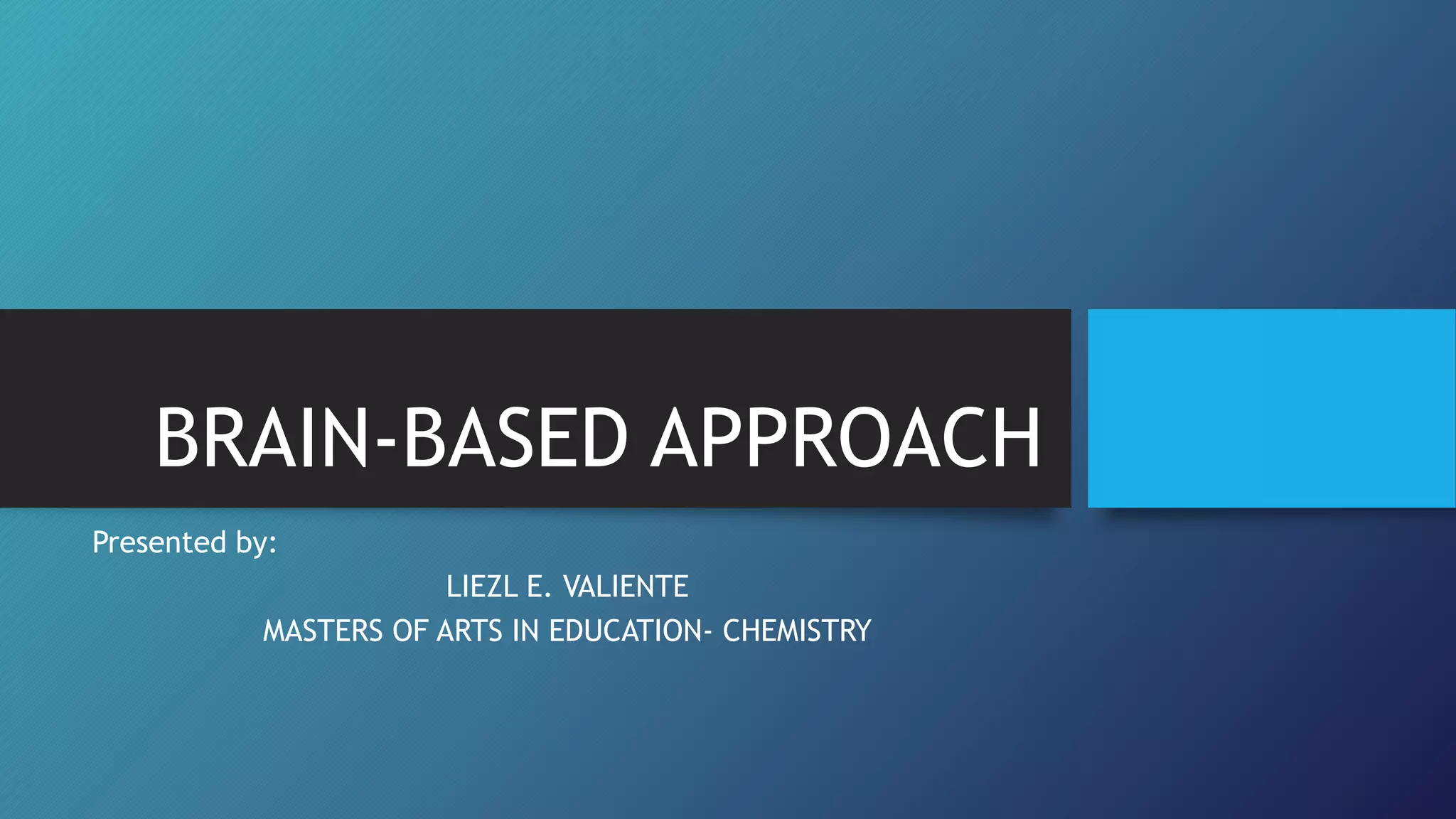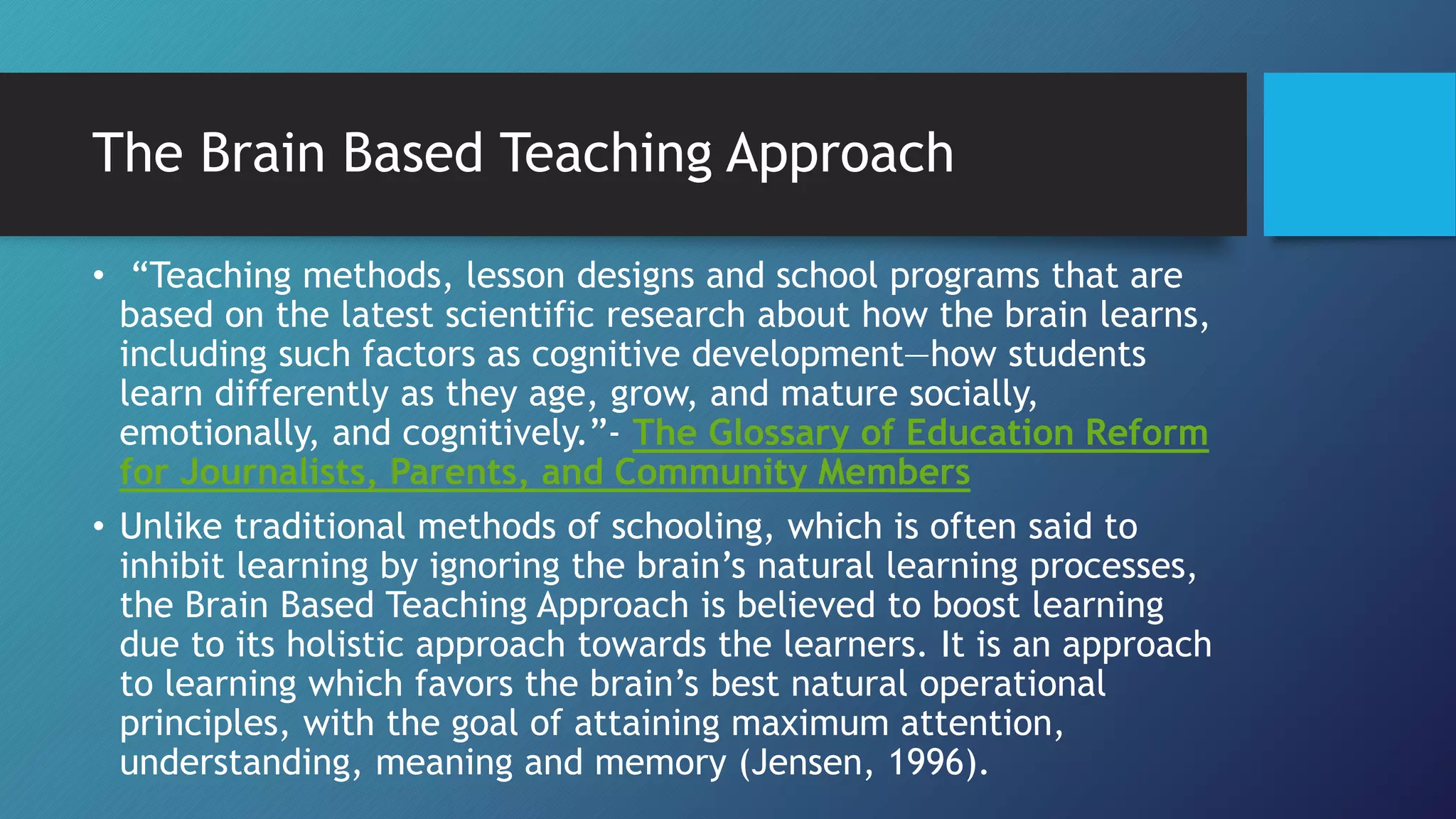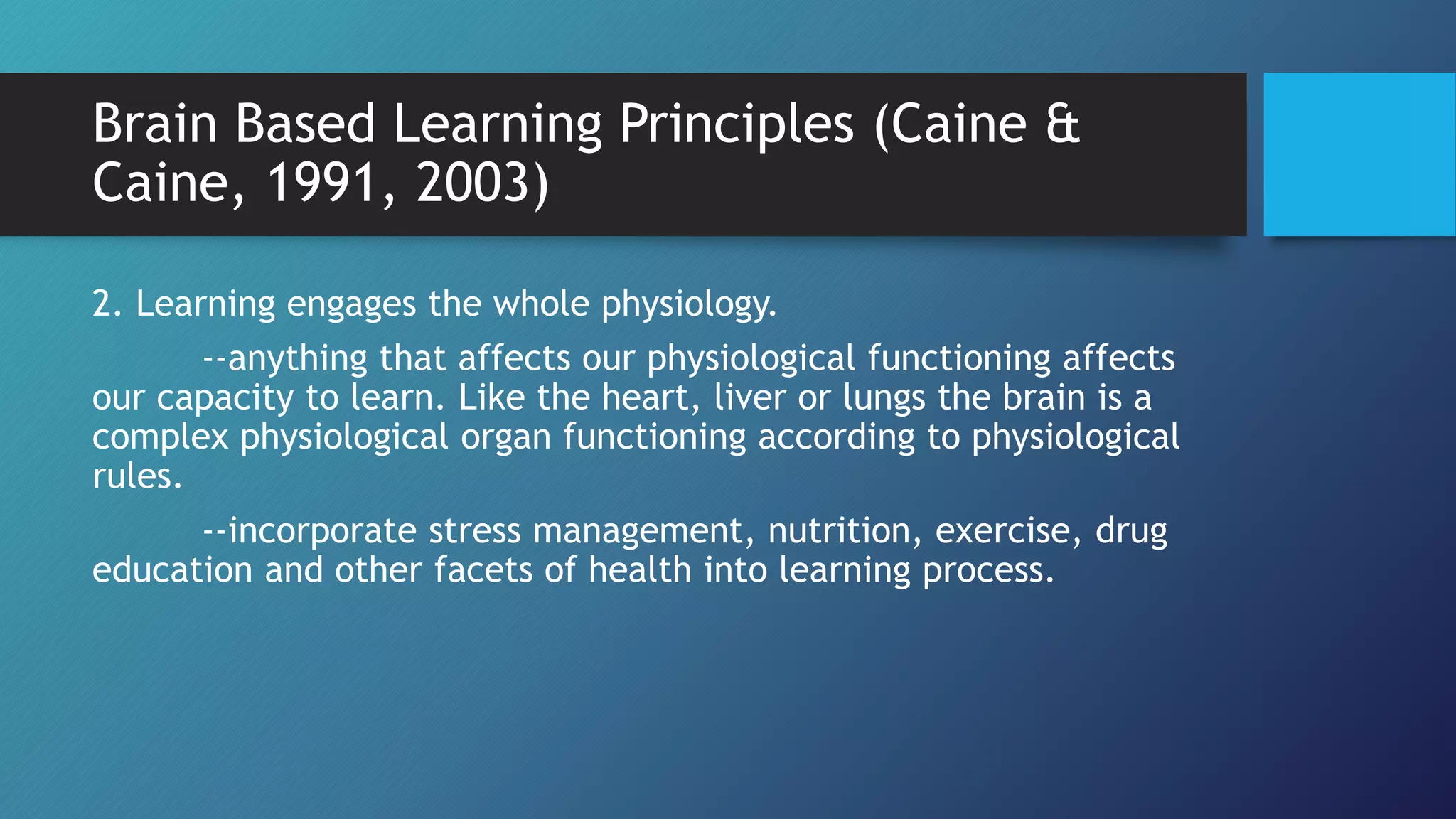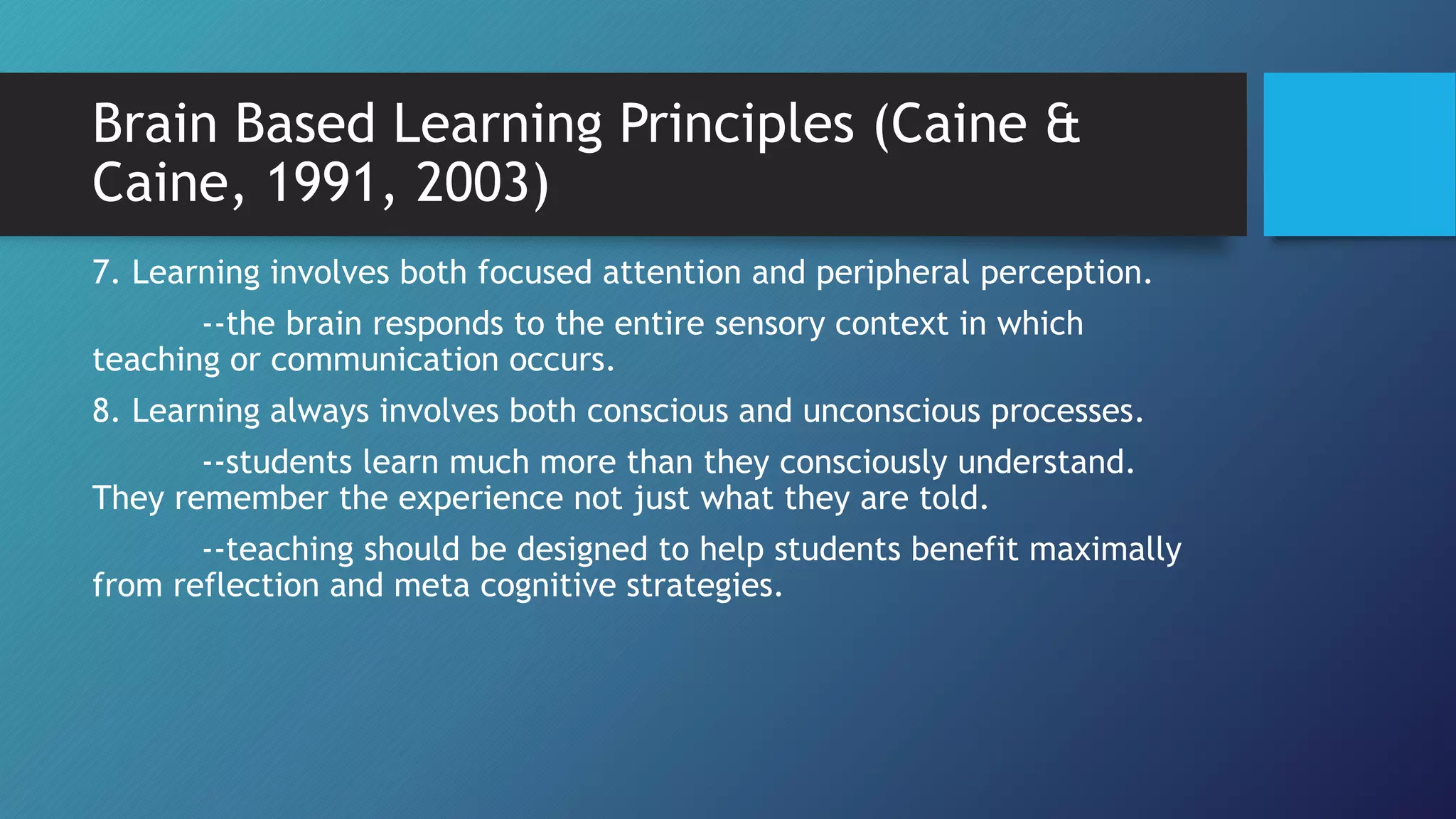The document discusses the brain-based teaching approach, which aims to enhance student learning by incorporating principles of how the brain works into teaching methods. It outlines 12 principles of brain-based learning according to Caine and Caine, such as the brain processing information simultaneously through different regions, emotions playing a role in learning, and learning being enhanced with challenge and inhibited by threats. The implications are that teachers should vary their methods to suit individual student brains and provide an enriched learning environment. Key instructional techniques include orchestrated immersion, relaxed alertness, and active processing.










![Implications for Eucation
• As brain development and growth is dependent on an individual’s
experiences, the challenge, really, is for teachers to vary their methods of
teaching and shift the paradigm from a “one fits all” to an “enriched
environment” for each and every student (Caine & Caine, 1991, 2003;
Jensen, 1998; Evan, 2007). The role of teachers is to provide the
appropriate classroom climate, which emphasizes on instructions that
accommodate how the brain learns, that will enhance brain functionality
in processing and constructing data properly, according to the individual
learner’s level. Although there have been a number of arguments
regarding this approach, powerful insights that are significant to classroom
learning have emerged from this brain science strategy. They include:
‘learning experiences do help the brain grow, emotional safety does
influence learning, and making lessons relevant can help information to
stick’ (Benard, [Online]).](https://image.slidesharecdn.com/brain-basedapproach-220829095312-37f5d222/75/BRAIN-BASED-APPROACH-pptx-11-2048.jpg)

